Casio G-Shock GBD-H1000 review: a Garmin-rival running watch that's a bit rough around the edges
Casio G-Shock GBD-H1000 review: a fashion-forward running watch with a lot of sensors and a decent companion app
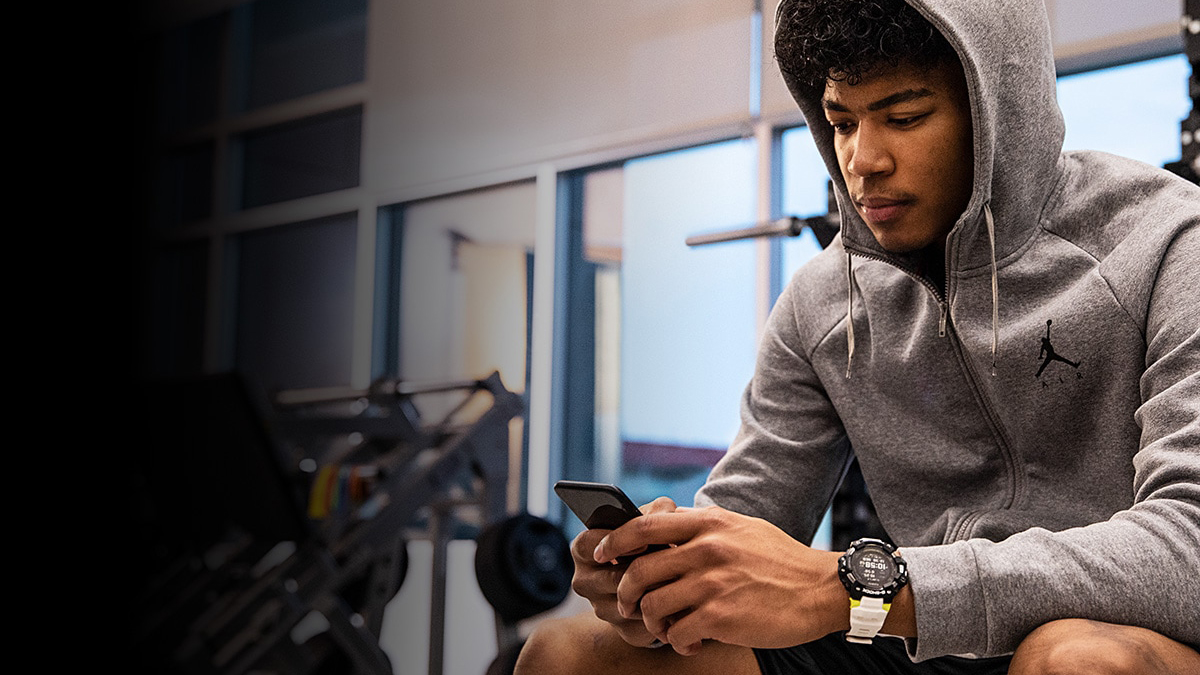
The Casio G-Shock GBD-H1000 tries to bridge the gap between fashion and running watches and gets some of the steps right. The watch is jam-packed with sensors but the heart rate sensor is not accurate enough to be used for serious running training. The accompanying Casio Move app is not too bad, though.
-
+
A lot of sensors on board
-
+
Chunky G-SHOCK styling
-
+
Casio Move app is decent
-
+
Tough construction
-
+
Bright screen
-
+
VO2 max and training status estimation
-
-
Inaccurate heart rate sensor
-
-
GPS takes forever to pick up signal
-
-
Long loading times after activity has finished
-
-
Comparatively small screen
-
-
Expensive for what it has to offer
Why you can trust T3

Casio G-Shock GBD-H1000 review TL;DR: a good first try from Casio to create a modern smart running watch. It might be rough around the edges, but the GBD-H1000 shows potential.
I like the premise of the Garmin-rival Casio G-Shock GBD-H1000. The Japanese manufacturer tried its best to deliver a functional G-SHOCK for runners and included all the sensors the designers could think of: we have an optical heart rate sensor, a magnetic sensor, pressure sensor, thermo sensor and finally, an accelerometer included in the rather chunky body of the G-Shock GBD-H1000.
The Casio GBD-H1000 is far from being the best running watch on the market, but I can see why some people might like it: the watch is adorably bulky and has loads of features a lot of runners, especially those who don't need the most precise running watch for their training, will appreciate.
Let's discover what's good and bad about the Casio G-Shock GBD-H1000.
(We also have a review of Casio's Wear OS-powered multisport watch, the Casio G-SQUAD PRO GSW-H1000. So that you know.)
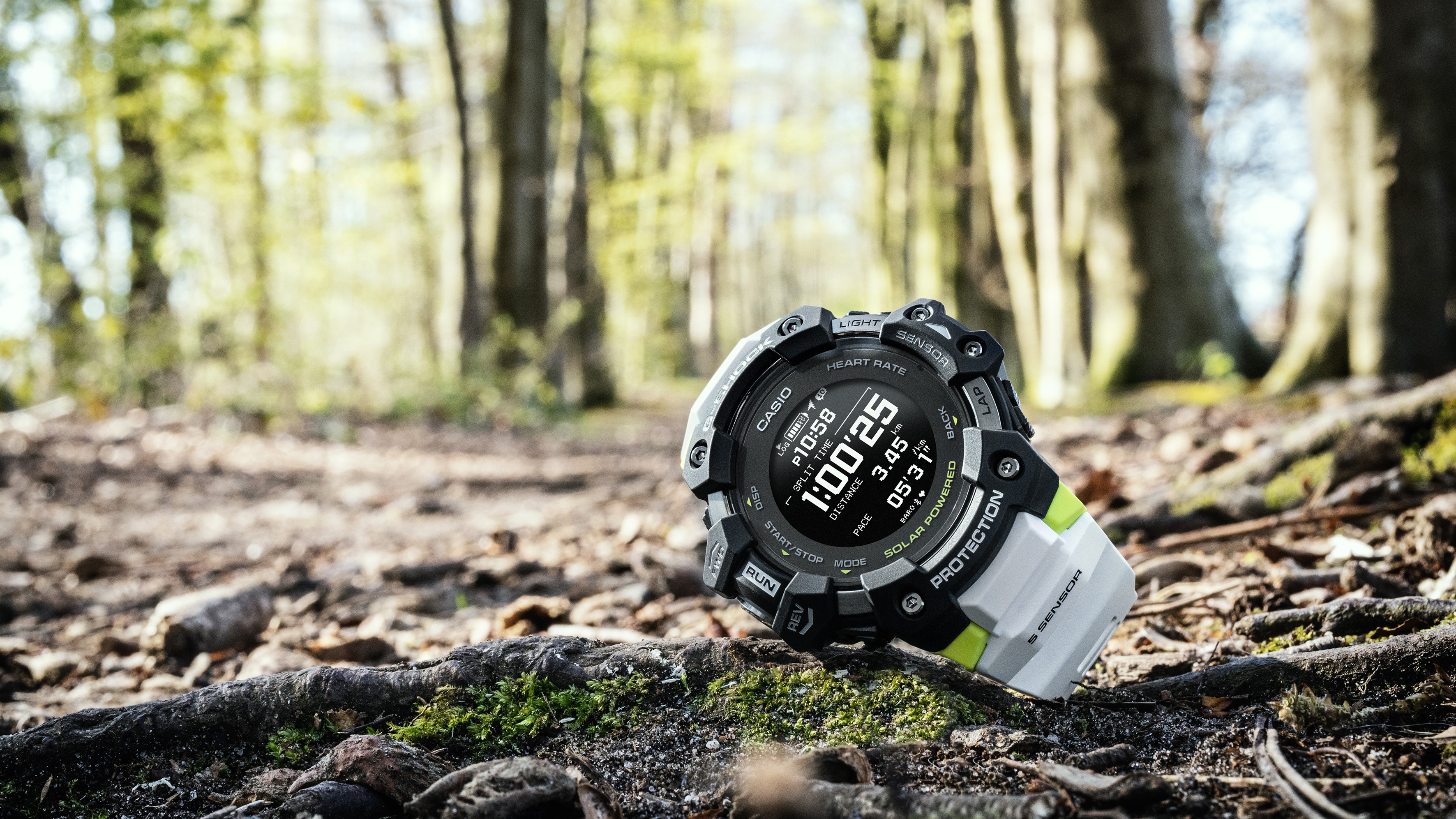
Drop it like it's hot: the Casio G-Shock GBD-H1000 is rugged enough to survive in the wild
Casio G-Shock GBD-H1000 review: overview
The Casio G-Shock GBD-H1000 is a running watch that tries to bridge the gap between fashion accessories and fitness wearables. This is not Casio's first smartwatch but definitely the first one dedicated for runners and the accompanying app – Casio Move – has also just been released too.
The main USP here are the five sensors, the solar charging feature, long battery life and the ruggedness of the Casio G-Shock GBD-H1000. and indeed, the G-Shock GBD-H1000 delivers on the hype: it has a long battery life, the solar charging is a cool gimmick, the watch is rugged and the all the sensors are present that were advertised.
The Casio G-Shock GBD-H1000 supports smart notifications, offers VO2 max and training status estimation. You can also create plans in the Casio Move app and sync it with the watch, similar to Garmin Coach, although as far as I'm concerned the 'Casio Coach' is not adaptive but at least it is based on your stats.
On the downside, many of the sensors are redundant for runners who run in or around their homes and the sensors that they would use, such as heart rate sensor and GPS, are not accurate enough so the data from them would help runners get better at running. Since data from the key sensors influence other features in the watch – namely VO2 max estimation, calories burned and training status – the lack of accuracy here really skews the overall experience.
The watch is also relatively expensive for what it offers: for roughly the same price, you can get a Polar Vantage V which is way more accurate than the G-Shock GBD-H1000, not to mention the Garmin Forerunner 245 which is £100 cheaper and to some degree, more capable than the Casio.
Is the Casio G-Shock GBD-H1000 Waterproof?
Yes, it is! The Casio GBD-H1000 is water rated up to 200 ATM which means it can be used in the swimming pool and not just for showering. That said, the Casio GBD-H1000 won't measure heart rate underwater (it struggles with accuracy even above water).
Overall, the Casio GBD-H1000 is a rugged watch that enjoys being in the water as much as on land.
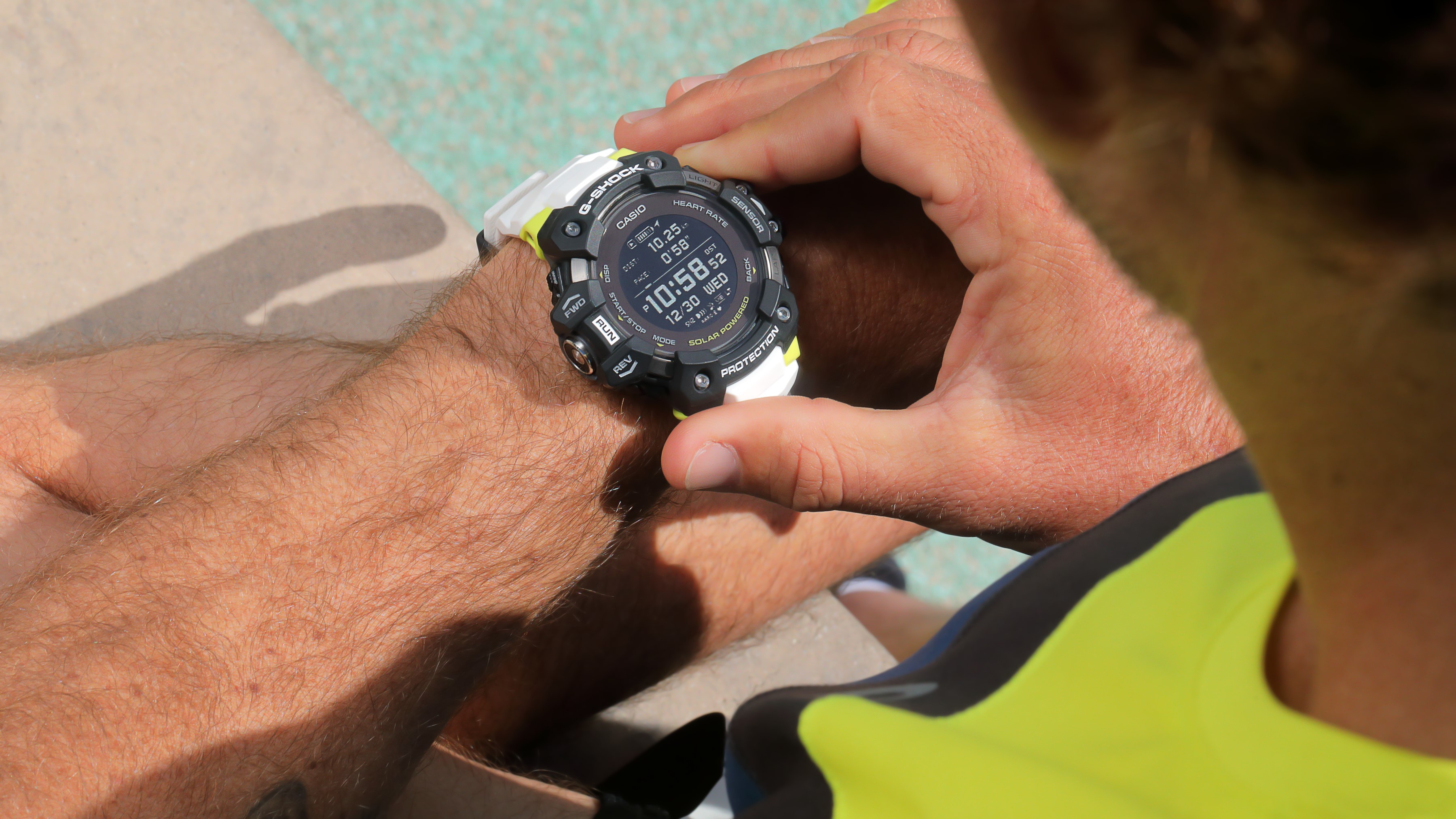
Memory-in-pixel display has good contrast and bright enough too
Casio G-Shock GBD-H1000 review: display
The Casio G-Shock GBD-H1000 has a comparatively small LCD screen, especially compared to the large body of the watch. I couldn't actually find any information online about the pixel density or even the size of the screen but according to my very rudimentary measurements, the Casio G-Shock GBD-H1000's useful screen size is around 26 mm/ 1.02".
The screen might not be big but it's easy to read thanks to the monochromatic colour scheme. The memory-in-pixel technology used here is similar to the Garmin Forerunner series and provides good contrast and high enough-resolution to display running information. Smart notifications, on the other hand, might be a bit harder to decipher.
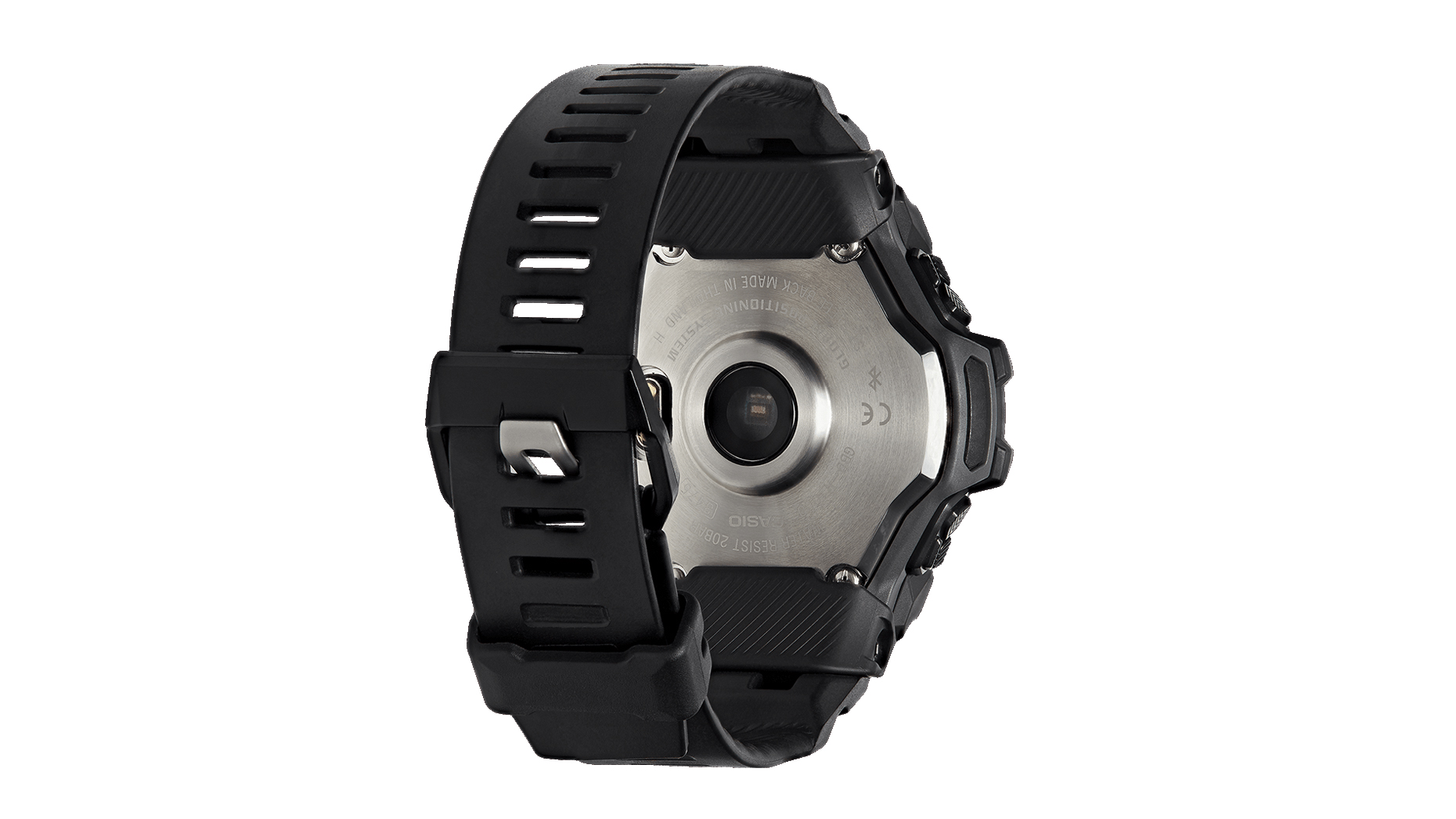
I wish the heart rate sensor was more precise and the GPS quicker to pick up signal
Casio G-Shock GBD-H1000 review: sensors and accuracy
As I mentioned already, the Casio G-Shock GBD-H1000 offers a lot of sensors and features that would satisfy many runners, at least on paper. We have an optical heart rate sensor, 3-axis accelerometer, GPS, magnetic sensor (compass), pressure sensor (altimeter, barometer) and thermo sensor (temperature).
Of these, the most important ones for runners are the optical heart rate and the GPS. The compass is not much use for urban runners and the data from the pressure sensor would only be useful for trail runners tackling routes at higher altitudes. The inclusion of the temperature sensor puzzled me even in the otherwise brilliant Garmin Fenix 6 Pro too as it is such a random metric and not sure if anyone is using it to improve form.
The Casio G-Shock GBD-H1000 might offer a range of sensors but their accuracy is not great, at least for now. I imagine after some software updates it will improve significantly but for the time being, they provide rough estimations at best.
The GPS signal takes quite long to pick up but once locked in, the watch can track your movements precisely. The Casio G-Shock GBD-H1000 tracks position using not only the GPS but also GLONASS and Michibiki (QZSS) satellite systems.
The heart rate sensor is probably the weakest point in the watch as it doesn't seem to get correct readings regardless of the tightness of the watch. The heart rate averages are up to ten points off compared to other running watches and heart rate sensors. Since the heart rate is not correct, it has an effect on VO2 max levels, recovery time estimates, fitness level measurements and more.
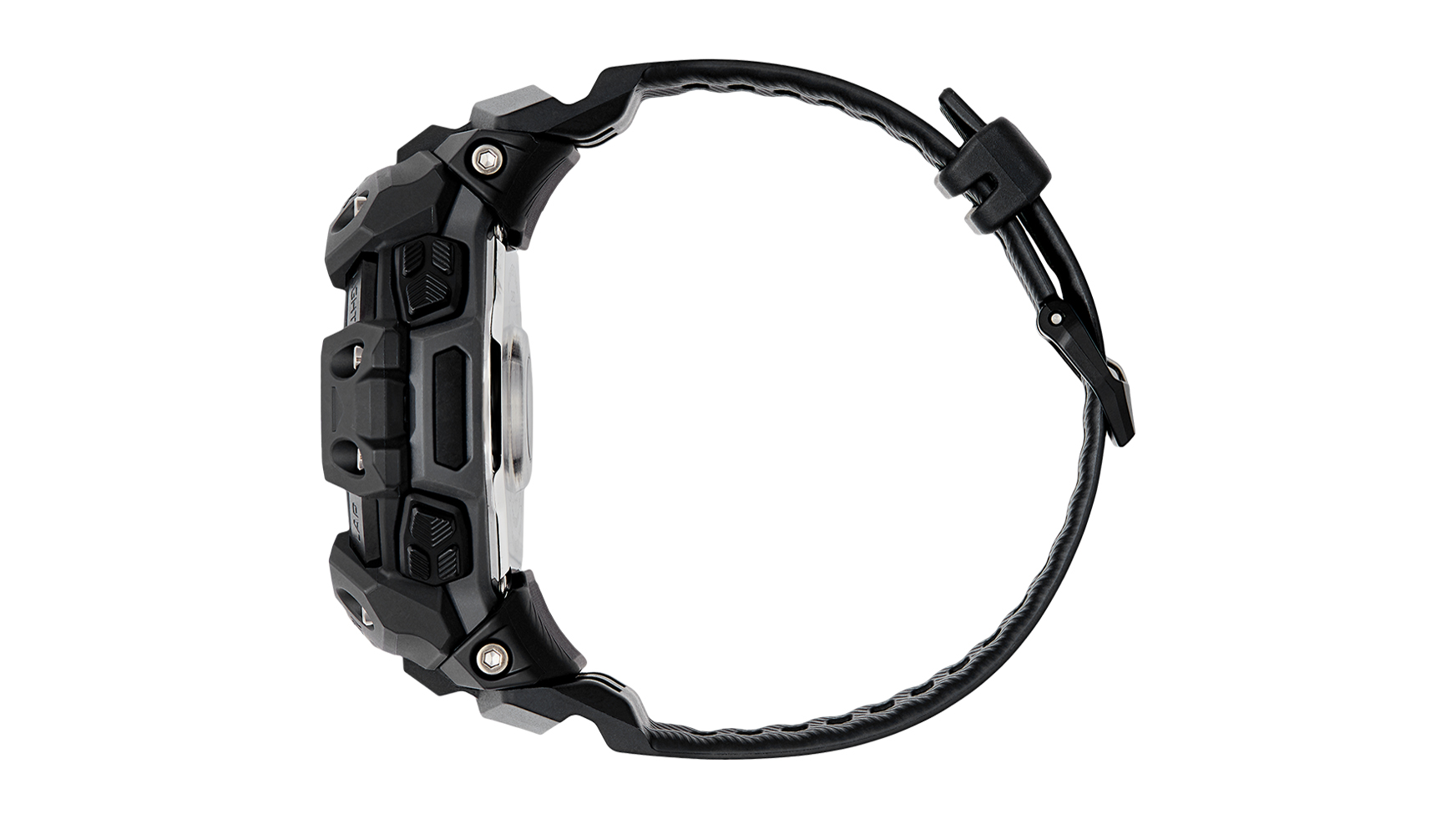
Un-hinged design
Casio G-Shock GBD-H1000 review: ergonomics
The Casio G-Shock GBD-H1000 looks and feels like a G-Shock watch, for better or worse. People fan of the G-Shock design will appreciate the colour-matched soft urethane band and protected case cover plus the oversized and emphasised features of the GBD-H1000.
This is a rugged running watch: urethane is famous for its scratch- and temperature resistant properties and the Casio G-Shock GBD-H1000's patented 'Hollow Core Guard Structure' can withstand vibrations coming from heavy duty machinery according to the manufacturer, not to mention the water-tightness of the case.
All this ruggedness comes at a price: the GBD-H1000 is a heavy watch, way heavier than most running watches. The tested model was 99 grams and the Casio's official spec for weight is 101 grams. In comparison, the Garmin Fenix 6 Pro Titanium clocks in at 71 grams and the Garmin Forerunner 945 at 49 grams. Fitbit Versa 2? 41 grams.
The Casio G-Shock GBD-H1000 is also rather bulky which can not only be annoying for some runners but it can also affect the precision of heart rate readings. The integrated strap design makes it even more difficult for people with smaller, bony wrists to find the right position since they can't tighten the strap for a better fit. In my experience, tightening the straps made the heart rate reading worse anyway.
The buttons are located around the edge of the case and clearly labelled on the watch face. The buttons haven't got a distinctive click depth but navigating around the screens is easy enough.
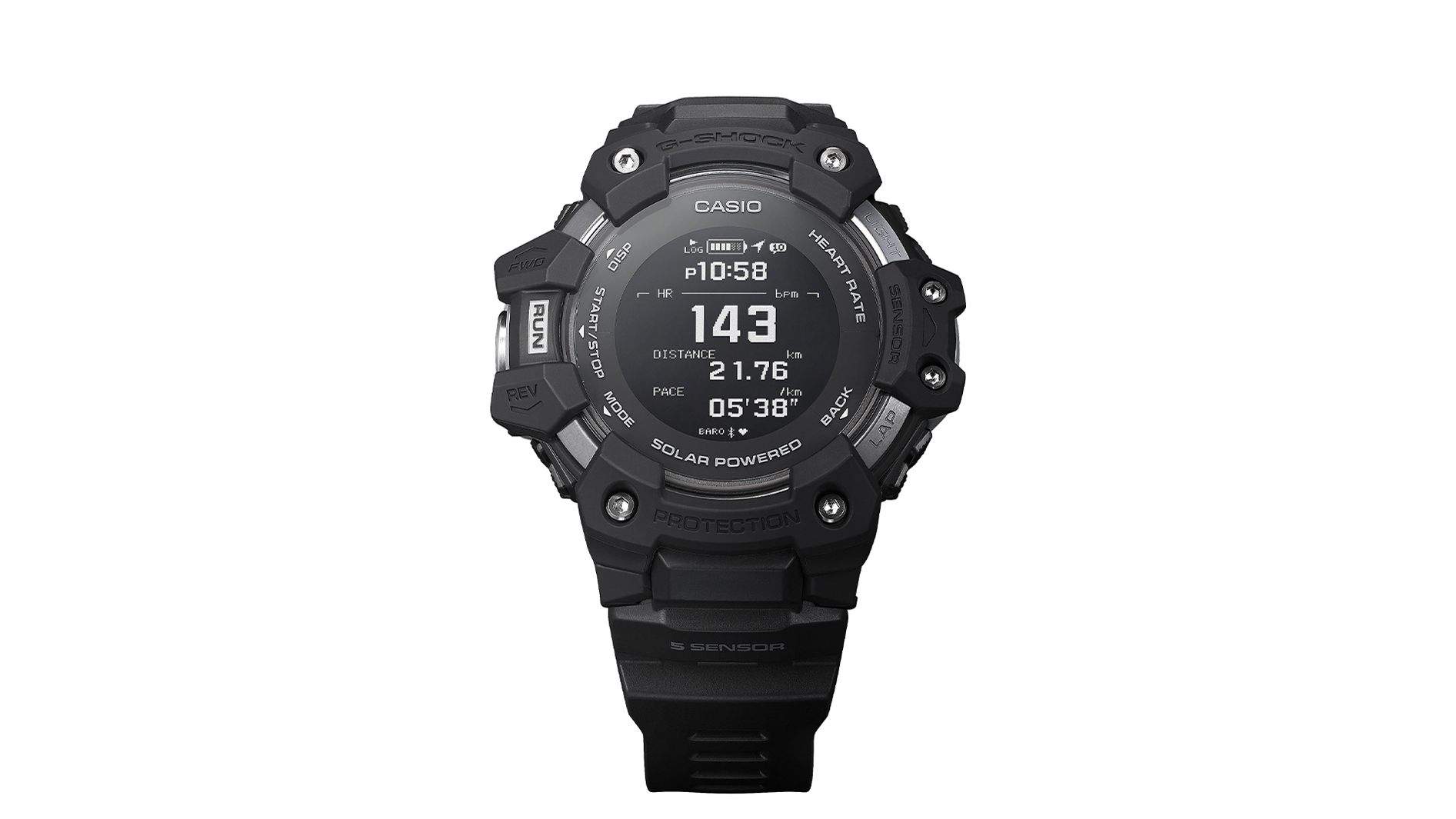
The battery will last forever with occasional tracking
Casio G-Shock GBD-H1000 review: battery life
One aspect of the Casio G-Shock GBD-H1000 I was genuinely impressed about is the battery life. I wasn't using it excessively but as long as you don't wear the watch all the time and don't use the GPS too often, solar charging can pretty much keep the Casio G-Shock GBD-H1000 running indefinitely.
for a watch with an always-on screen, this is pretty amazing. The long battery life is definitely helped by the heart rate monitor not being on all the time, the GBD-H1000 will only read heart rate during runs and when you switch to the heart rate monitor screen.
I also found that by storing the watch face down, the screen turns off, saving even more battery juice. Since the Casio G-Shock GBD-H1000 doesn't track sleep and, quite frankly, can't be worn in bed, you can store it on your bedside table face overnight.

Casio G-Shock GBD-H1000 review: features and Casio Move app
In theory, the GBD-H1000 can determine VO2 max, training status, training load, recovery time, training effect and calories burned during training using an algorithm from Firstbeat Technologies, the same tech used in the Garmin Quantix 6, Montblanc Summit 2, Huawei Watch GT 2e and more. In reality, since the heart rate sensor is a bit off, the suggestions about most of those stats are rough estimates at best.
Don't get me wrong, they are all there and the better still, there is a literal countdown times in the Casio Move app that tells you how long should you rest before you embark on your next run to optimise recovery. It's super funny to see that you've got "16 hours and 35 minutes" left, and not just "16 hours". You can check your activity log on the watch and also in the Casio Move app in more detail.
Talking about the Casio Move app: it is pretty decent, considering it has just been cobbled together very recently. The tiles work great to segment the information on the screen and the key stats about the runs are displayed in an easy-to-understand manner. On the run details page, you have your usual running stats such as distance, time, pace but also cadence, ascent/descent and elevation too.
You can also peruse the training effect of the run and there is also a handy little chart mapping pace/heart rate/elevation change. There is even an option to add a memo about the run which is handy since you can mark any occurrence that affected your run (e.g. had to have a 30 second small talk with a 'friend').
You can create and sync plans from the Casio Move app too and check your schedule too in there under the Activity tab. The plan is put together automatically based on your criteria and gives you a time/distance and heart rate goals to reach at each run. This feature is pretty cool and especially beginner can benefit from it loads, getting ready for longer races.
My favourite part of the Casio Move app was the way it displayed the route I took, colouring each segment according to the heart rate I had at the time. Needless to say, it would be way cooler if the sensor would record heart rate properly but I once it has been updated, I'd love to do more runs to see which sections I struggle with.
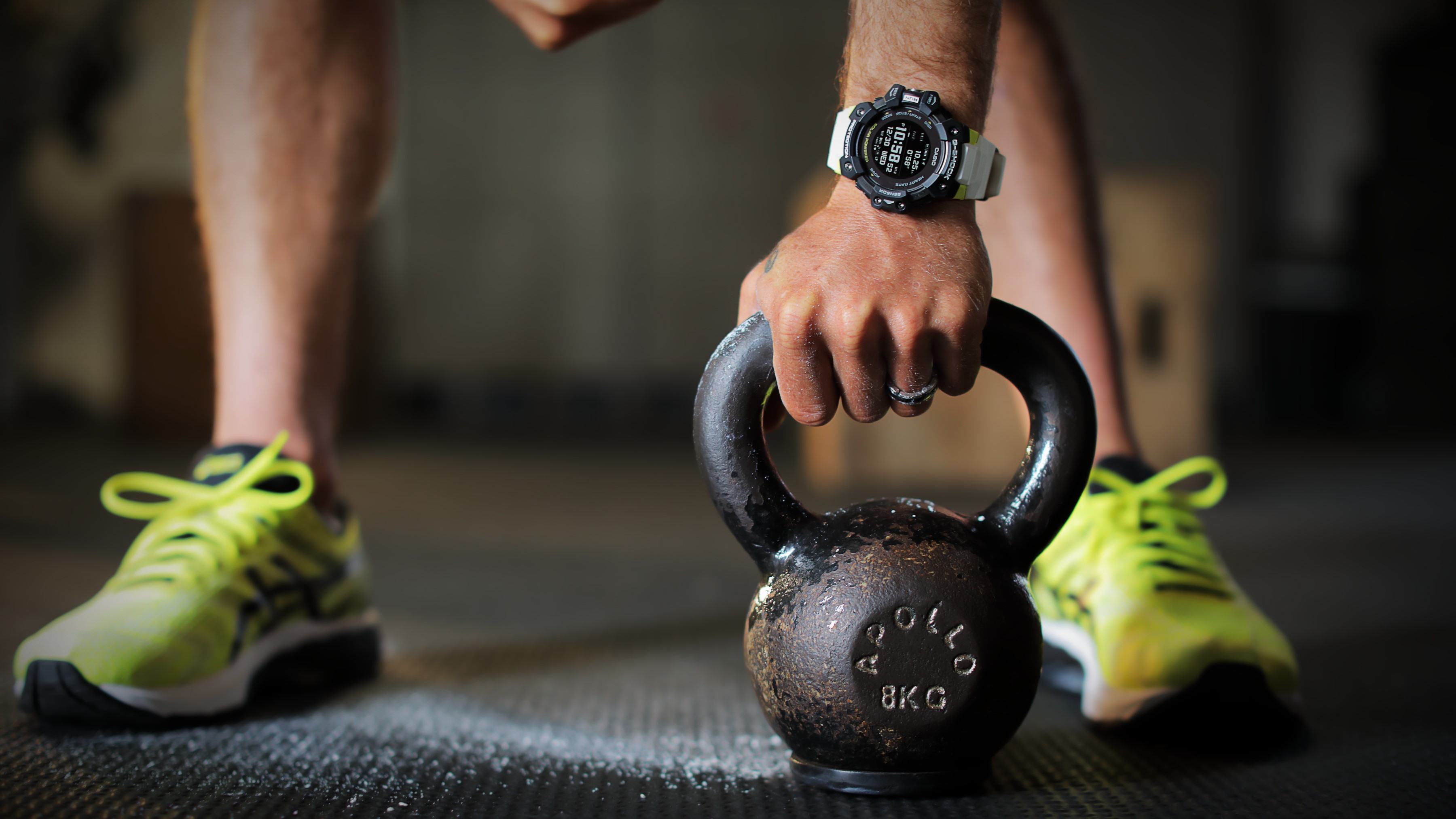
Should it have more accurate sensors, I would wholeheartedly recommend the Casio G-Shock GBD-H1000
Casio G-Shock GBD-H1000 review: verdict
The Casio G-Shock GBD-H1000 really is a mixed bag or a running watch.
On the plus side, it is rugged for sure and well-protected against the elements. The watch can withstand vibration and it is also watertight and rated to 200 metres so you can swim in it (it won't record heart rate underwater though). The screen is bright and has a good contrast so it's visible in broad daylight.
The design is eye-catching and probably very appealing for people who are into the chunky G-Shock look. The buttons are easy to locate and the watch's UI is straightforward enough to use. the built-in sensors provide some good stats without external sensors needed, such as cadence, that can be useful even for more seasoned runners.
• Buy the Casio GBD-H1000 directly from Casio
The Casio Move app is decent and gives a good overview of your training status and runs. You can create plans in the app and sync it to the watch which will be appreciated by beginner runners. The heart rate-route view of the map is an interesting take and provides further insight on running training.
On the downside, the sensors either take forever to get ready (GPS), are not accurate (heart rate sensor) or redundant for runners (pressure and thermo sensor). The main issue is definitely the inaccuracy of the heart rate sensor since it has an effect on all the other features of the watch, including VO2 max estimate, training status, calories burned etc.
The Casio G-Shock GBD-H1000 is also heavy, even compared to other large running watches on the market. It is twice as heavy as the very competent Garmin Forerunner 945, for comparison. The integrated strap design makes it even trickier for people with smaller wrist to find the right fit which can further affect accurate heart rate readings.
It is also worth mentioning that the Casio G-Shock GBD-H1000 is relatively expensive, compared to other running watches on the market. You can get a Garmin Forerunner 245 for £100 cheaper or a Polar Vantage V for £50 cheaper, both of which are more accurate than the Casio. I wonder if getting rid of the extra sensors and the solar charging would make the GBD-H1000 cheaper and more competitive?
I can't say I didn't enjoy testing the Casio G-Shock GBD-H1000, on the contrary. It is fun to wear such a bulk on your wrist and the bold colour scheme (I had the red version) just made the watch even more visible on my wrist. I also liked the monochromatic screen that most certainly distinguishes the GBD-H1000 from the competition, although admittedly not as great for displaying multimedia messages.
Once the sensors have been updated, I will recommend the Casio G-Shock GBD-H1000 for all fashion-conscious runners with larger wrists. Until then, the watch remains an almost-precise first try from Casio to get into the market of running watches.
Casio G-Shock GBD-H1000 review: also consider
Need a running watch that's equally as bulky as the Casio GBD-H1000 but maybe a bit more competent? Try the Garmin Enduro for size. The Garmin Enduro is a future-proof GPS multisport watch that has an insanely-long battery life and some trail running-specific features that even non-trail runners will appreciate.
Also chunky and competent is the Coros Vertix adventure watch: it's water rated up to 150 metres, built from high-quality materials and has an extremely long battery life. Not to mention all the cool colourways it's available to buy in.
Sign up to the T3 newsletter for smarter living straight to your inbox
Get all the latest news, reviews, deals and buying guides on gorgeous tech, home and active products from the T3 experts

Matt Kollat is a journalist and content creator who works for T3.com and its magazine counterpart as an Active Editor. His areas of expertise include wearables, drones, fitness equipment, nutrition and outdoor gear. He joined T3 in 2019. His byline appears in several publications, including Techradar and Fit&Well, and more. Matt also collaborated with other content creators (e.g. Garage Gym Reviews) and judged many awards, such as the European Specialist Sports Nutrition Alliance's ESSNawards. When he isn't working out, running or cycling, you'll find him roaming the countryside and trying out new podcasting and content creation equipment.
-
 Threads on the web wants to tempt you away from X
Threads on the web wants to tempt you away from XMeta's newest social network gets a new home and a host of new features
By Carrie Marshall Published
-
 These ultra-luxe dumbbells are encrusted with Swarovski crystals
These ultra-luxe dumbbells are encrusted with Swarovski crystalsFitness asthetics at its finest
By Bryony Firth-Bernard Published
-
 8K on its way as Warner says "yay!"
8K on its way as Warner says "yay!"Warner Bros has scanned over 20 movies in 8K for the ultimate home cinema experience
By Carrie Marshall Published